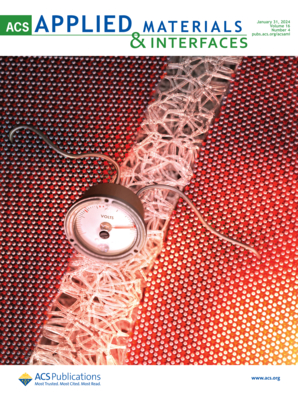Growth rates of marine prokaryotes are extremely diverse, even among closely related taxa
IF 8.3
2区 材料科学
Q1 MATERIALS SCIENCE, MULTIDISCIPLINARY
引用次数: 0
Abstract
Marine prokaryotes play crucial roles in ocean biogeochemical cycles, being their contribution strongly influenced by their growth rates. Hence, elucidating the variability and phylogenetic imprint of marine prokaryotes' growth rates are crucial for better determining the role of individual taxa in biogeochemical cycles. Here, we estimated prokaryotic growth rates at high phylogenetic resolution in manipulation experiments using water from the northwestern Mediterranean Sea. Experiments were run in the four seasons with different treatments that reduced growth limiting factors: predators, nutrient availability, viruses, and light. Single-amplicon sequence variants (ASVs)-based growth rates were calculated from changes in estimated absolute abundances using total prokaryotic abundance and the proportion of each individual ASV. The trends obtained for growth rates in the different experiments were consistent with other estimates based on total cell-counts, CARD-FISH subcommunity cell-counts or metagenomic-OTUs. Our calculations unveil a broad range of growth rates [0.3-10 d-1] with significant variability even within closely related ASVs. Likewise, the impact of growth limiting factors changed over the year for individual ASVs. High numbers of responsive ASVs were shared between winter and spring seasons, as well as throughout the year in the treatments with reduced nutrient limitation and viral pressure. The most responsive ASVs were rare in the in situ communities, comprising a large pool of taxa with the potential to rapidly respond to environmental changes. Essentially, our results highlight the lack of phylogenetic coherence in the range of growth rates observed, and differential responses to the various limiting factors, even for closely related taxa.海洋原核生物的生长率差异极大,即使在关系密切的类群之间也是如此
海洋原核生物在海洋生物地球化学循环中发挥着至关重要的作用,它们的贡献受其生长速率的强烈影响。因此,阐明海洋原核生物生长率的变异性和系统发育印记对于更好地确定各个类群在生物地球化学循环中的作用至关重要。在此,我们利用地中海西北部的海水进行了操纵实验,以较高的系统发育分辨率估算了原核生物的生长率。实验在四季进行,采用了不同的处理方法,减少了限制生长的因素:捕食者、营养供应、病毒和光照。利用原核生物总丰度和每个单个 ASV 的比例,通过估计绝对丰度的变化计算出基于单个扩增子序列变体(ASV)的生长率。不同实验中获得的增长率趋势与其他基于总细胞数、CARD-FISH 子群落细胞数或元基因组-OTU 的估计值一致。我们的计算揭示了一个广泛的生长率范围[0.3-10 d-1],即使在密切相关的 ASV 中也存在显著的差异。同样,生长限制因素对单个 ASV 的影响在一年中也会发生变化。在营养限制和病毒压力较小的处理中,冬春两季以及全年都有大量反应灵敏的 ASV。反应最灵敏的 ASV 在原位群落中很少见,它们组成了一个庞大的类群,有可能对环境变化做出快速反应。从根本上说,我们的研究结果突显了所观察到的生长率范围缺乏系统发生学上的一致性,以及对各种限制因素的不同反应,即使是对亲缘关系很近的类群也是如此。
本文章由计算机程序翻译,如有差异,请以英文原文为准。
求助全文
约1分钟内获得全文
求助全文
来源期刊

ACS Applied Materials & Interfaces
工程技术-材料科学:综合
CiteScore
16.00
自引率
6.30%
发文量
4978
审稿时长
1.8 months
期刊介绍:
ACS Applied Materials & Interfaces is a leading interdisciplinary journal that brings together chemists, engineers, physicists, and biologists to explore the development and utilization of newly-discovered materials and interfacial processes for specific applications. Our journal has experienced remarkable growth since its establishment in 2009, both in terms of the number of articles published and the impact of the research showcased. We are proud to foster a truly global community, with the majority of published articles originating from outside the United States, reflecting the rapid growth of applied research worldwide.
 求助内容:
求助内容: 应助结果提醒方式:
应助结果提醒方式:


